Sustainable Development: A Postcard from Bhutan.
12 May 2021
Sustainable Development: A Postcard from Bhutan.
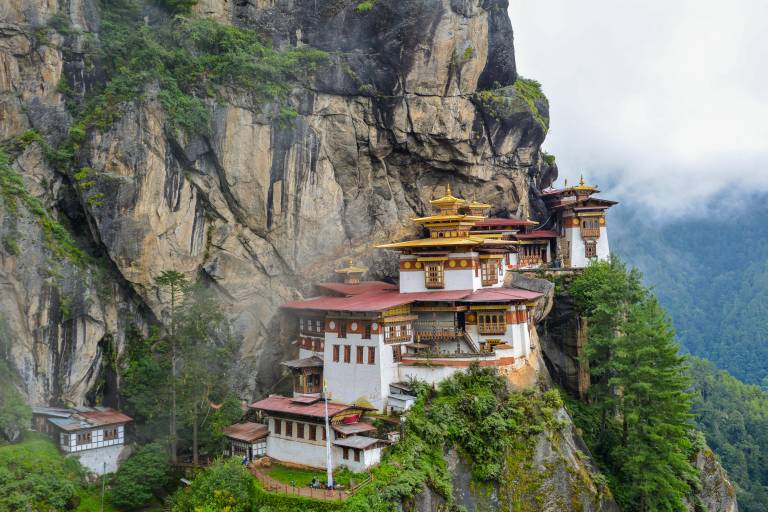
The modern economic model of growth is not sustainable. It consumes global resources at an untenable rate. Moreover, the biosphere which supports that economy and all surrounding life is being destroyed. This will not end well and we need to change the metrics for our success. That is the conclusion of the Dasgupta Review (reference 1) released by the UK government in February 2021.
The Review calls into question the universal application of GDP as a guide to economic progress. Amongst its recommendations are that society should measure increases and decreases in Inclusive Wealth, which includes Social and Natural Capital.
Such an approach implies that we must ultimately change our societal goals. How might we achieve this? One country, nestling amongst the peaks of the Himalayas, provides some insight.
Happiness is the way!
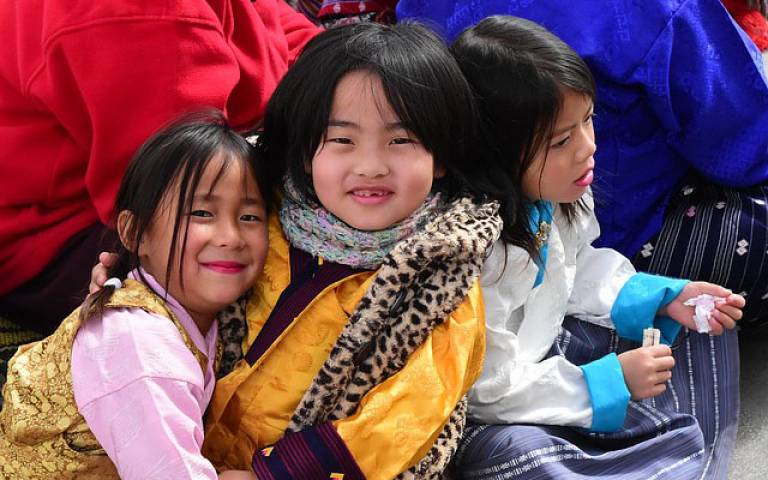
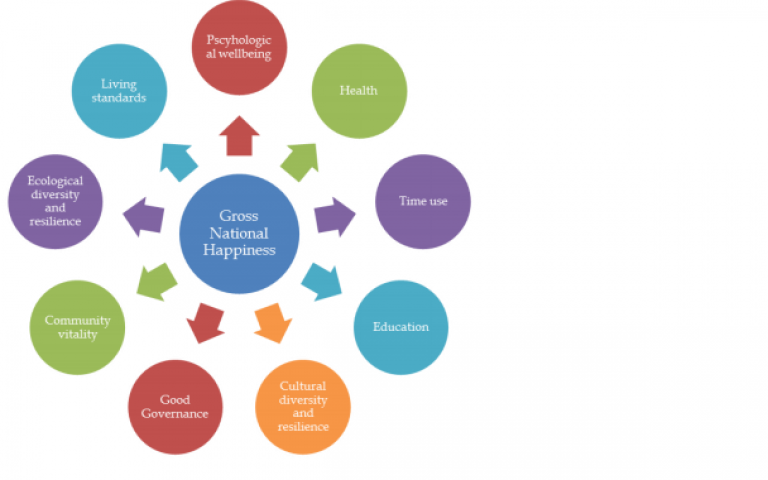
Ura, K., Alkire, S., Zangmo, T. and Wangdi, K.. 2015. Provisional Findings of 2015 Gross National Happiness Survey. Centre for Bhutan Studies & GNH Research. Available at https://www.gbv.de/dms/zbw/844059447.pdf
GNH is embedded into Bhutanese institutions and into life in general (11). It plays a pivotal role in development and planning (5).
Not just total consciousness
So how has Bhutan fared under its GNH regime? In terms of accepted economic metrics, GDP growth has averaged 7.5% per annum since the early 1980’s (3) and Bhutan is on course to graduate to Developing Country Status (6).
However, GNH is consistent with SDG goals and Bhutan is making good progress here too (7). Extreme poverty has reduced from 18% in 2003 to 2% in 2019 (8). Approximately 100% of children are enrolled in primary education (9) and longevity has doubled to 73 years since 1960 (10).
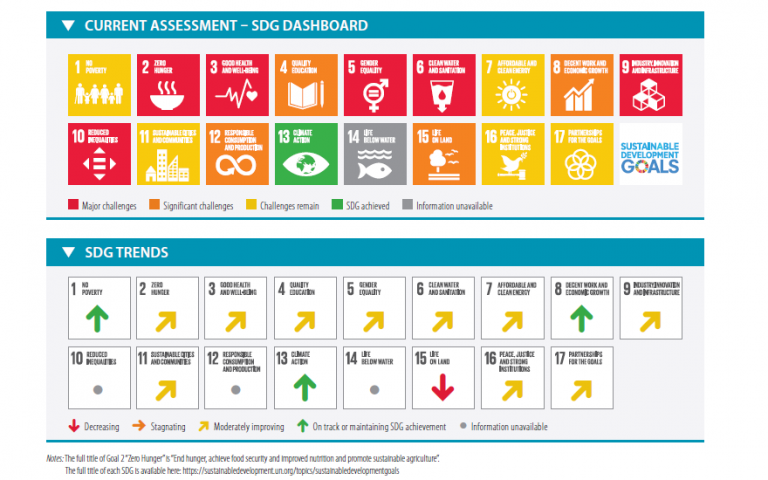
Sachs, J., Schmidt-Traub, G., Kroll, C., Lafortune, G., Fuller, G., Woelm, F. 2020. The Sustainable Development Goals and COVID-19. Sustainable Development Report 2020. Cambridge: Cambridge University Press.
Available at https://onlinelibrary.wiley.com/doi/full/10.1111/padr.12366
Enlightenment
Not all of this success has been driven by the power of culture and the philosophy of GNH. Bhutan is blessed with large hydropower resources which have been extensively developed since 2000 and now comprise 34.5% of export earnings (12). Electricity access has risen from 31% in 2000 to 98% in 2017 (8). Nevertheless, power resources have been developed responsibly and sustainably. This is unfortunately not always the case in the developing world. Bhutan’s focus, through its GNH philosophy, on good governance (13) is notable. Good governance is often key to the successful development of energy resources (16).
The Road to Nirvana
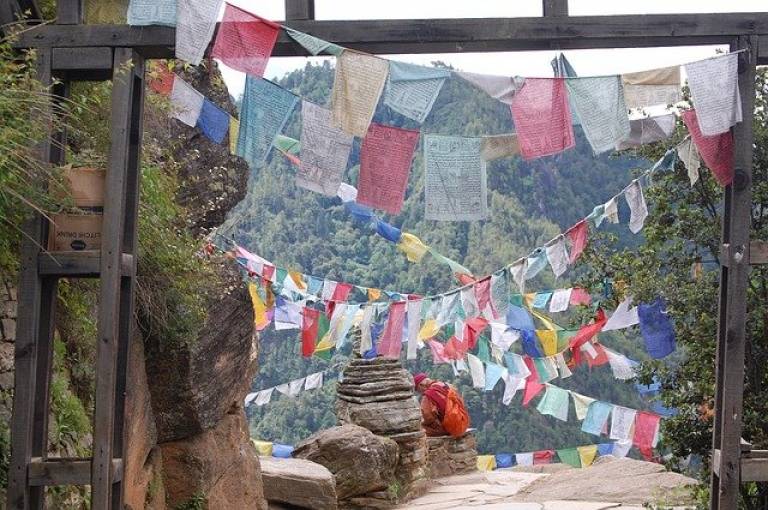
Bhutan’s experience points to the benefits of embedding values in our consciousness, our culture and our institutions. Development in Bhutan has moved forward in step with its environment. Forest cover has risen to over 70% of land and it is currently the only carbon-negative country (14).
The Dasgupta Review is aspirational in calling for changes to how we measure success. Gross National Happiness may also be aspirational (15) but perhaps it provides insightful foundations and lessons for sustainable progress.
References
1. Dasgupta, P. 2021. The Economics of Biodiversity: The Dasgupta Review. Available at https://assets.publishing.service.gov.uk/government/uploads/system/uploads/attachment_data/file/962785/The_Economics_of_Biodiversity_The_Dasgupta_Review_Full_Report.pdf
2. Alkire, S. 2012 Gross National Happiness Index Explained in Detail. Centre for Bhutan Studies. 2012;1–6.
3. World Bank. 2020. Systematic Country Diagnostic Taking Bhutan’s Development Success to the Next Level. Available at http://documents1.worldbank.org/curated/en/162771580405026027/pdf/Bhutan-Systematic-Country-Diagnostic.pdf
4. Ura, K., Alkire, S., Zangmo, T. and Wangdi, K.. 2015. Provisional Findings of 2015 Gross National Happiness Survey. Centre for Bhutan Studies & GNH Research. Available at http://www.grossnationalhappiness.com/SurveyFindings/ProvisionalFindingsof2015GNHSurvey.pdf
5. Balasubramanian S, Cashin P. Gross National Happiness and Macroeconomic Indicators in the Kingdom of Bhutan. IMF Work Pap. 2019;19(15):1. Available at file:///C:/Users/David%20Simms/Downloads/wp1915.pdf
6. Gyelmo, D. 2018. Bhutan to Graduate from Being a Least Developed Country. The Third Pole, London. Available at https://www.thethirdpole.net/en/energy/bhutan-least-developed/. Accessed 20/2/2021.
7. Sachs, J., Schmidt-Traub, G., Kroll, C., Lafortune, G., Fuller, G., Woelm, F. 2020. The Sustainable Development Goals and COVID-19. Sustainable Development Report 2020. Cambridge: Cambridge University Press. Available at https://onlinelibrary.wiley.com/doi/full/10.1111/padr.12366. Accessed 20/2/2021.
8. United Nations. SDG Country Profile. Available at https://country-profiles.unstatshub.org/btn#goal-1. Accessed 20/2/2021.
9. UNESCO 2021. Bhutan Country Report. Available at https://en.unesco.org/countries/bhutan/. Accessed 20/2/2021
10. World Bank Data. Available at https://data.worldbank.org/indicator/SP.DYN.LE00.IN?locations=BT. Accessed 20/2/2021.
11. Balasubramanian, S. and Cashin, P., 2019. Gross National Happiness and Macroeconomic Indicators in the Kingdom of Bhutan. IMF Working Paper. Available at file:///C:/Users/David%20Simms/Downloads/wp1915.pdf.
12. IRENA, 2019. Renewables Readiness Assessment. The Kingdom of Bhutan. Available at https://www.irena.org/-/media/Files/IRENA/Agency/Publication/2019/Dec/IRENA_RRA_Bhutan_2019.pdf
13. ADB.org, 2014. 20th by 2020. Bhutan’s Drive for Good Governance. Asian Development Bank. Available at https://www.adb.org/sites/default/files/publication/59695/bhutan-drive-improved-governance_0.pdf
14. ClimateAction.org, 2017. Bhutan: the world’s first carbon-negative country. Climate Action. Available at https://www.climateaction.org/news/bhutan_the_worlds_only_carbon_negativ...
15. Culturerelations.net, 2021. History of GNH. Available at https://www.culture-relations.net/gross-national-happiness/history-of-gnh/. Accessed 21/2/2021.
16. Lele, U., Klousia-Marquis, M., & Goswami, S. (2013). Good Governance for Food, Water and Energy Security. Aquatic Procedia, 1, 44–63. https://doi.org/10.1016/j.aqpro.2013.07.005
Author
David Simms
 Close
Close

